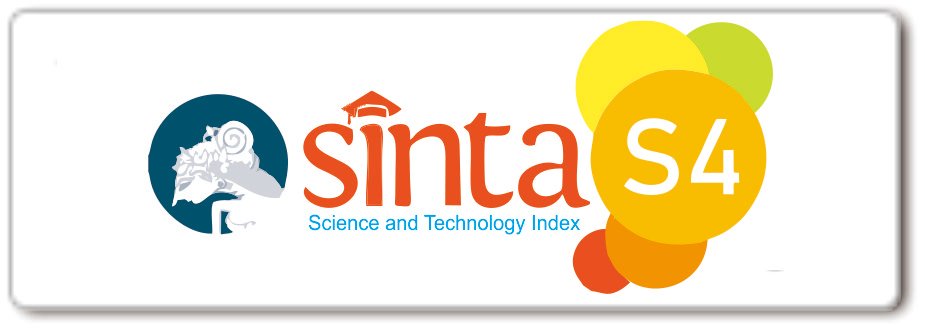ANALISIS FAKTOR RISIKO REAKSI KUSTA: STUDI RETROSPEKTIF DI RUMAH SAKIT RUJUKAN TERSIER INDONESIA TAHUN 2015-2020
DOI:
https://doi.org/10.33820/mdvi.v48i4.282Abstract
Latar Belakang: Kusta merupakan penyakit tropis terabaikan. Pada perjalan penyakit kusta yang kronis, sering terjadi reaksi kusta dengan episode subakut akibat respon imunologis terhadap antigen Mycobacterium. leprae . Pada kusta, penting diketahui berbagai faktor pemicu yang mungkin akan mencetuskan reaksi kusta, karena memiliki efek signifikan terhadap kualitas hidup.Â
Metode: Studi ini merupakan studi retrospektif analitik dengan data yang diambil dari rekam medis seluruh pasien kusta baru dari tahun 2015-2020. Seluruh varian data dianalisis dengan Pearson’s Chi Square dan Kruskal Wallis test. Analisis regresi logistik multivariat digunakan untuk mengkalkulasi risiko reaksi kusta.
Hasil & Diskusi: Reaksi tipe 1 lebih sering terjadi pada kusta borderline dengan indeks bakteri (IB) dan indeks morfologi (IM) negatif. Reaksi tipe 2 umum terjadi pada kusta tipe lepromatosa dengan IB  ≥3 + (p=0.001) dan IM 1-5%. Pada analisis multivariat, hanya IB 3+ atau lebih yang memiliki korelasi positif dengan kemunculan reaksi kusta.
Kesimpulan:  Klinisi perlu menggunakan klasifikasi Ridley and Jopling dan pemeriksaan IB  serta IM untuk mengetahui risiko terjadinya reaksi kusta.Â
Kata Kunci: penyakit tropis, faktor risiko, reaksi kusta
Downloads
References
2. WHO. Global leprosy (Hansen disease) update, 2019: time to step-up prevention initiatives. Wkly epidermiological Rec. 2020; 95: 417–40.
3. Thomas EA, Williams A, Jha N, Samuel CJ. A study on lepra reactions from a tertiary care center in North India. Int J Med Res Prof. 2017; 3(3): 162–6.
4. van Brakel WH, Sihombing B, Djarir H, Beise K, Kusumawardhani L, Yulihane R, dkk. Disability in people affected by leprosy: the role of impairment, activity, social participation, stigma and discrimination. Glob Health Action. 2012; 5: 10.3402/gha.v5i0.18394.
5. KEMENSKES RI. Pedoman nasional program pengendalian penyakit kusta. Jakarta: Kementerian Kesehatan Republik Indonesia; 2012.
6. Salgado CG, de Brito AC, Salgado UI, Spencer SJ. Leprosy. In: Kang S, Amagai M, Bruckner AL, Enk AH, Margolis DJ, Mcmichael AJ, dkk., penyunting. Fitzpatrick’s Dermatology in General Medicine. New York: McGrawHill; 2019. h. 2892–925.
7. Rodrigues Júnior IA, Gresta LT, Noviello M de LM, Cartelle CT, Lyon S, Arantes RME. Leprosy classification methods: a comparative study in a referral center in Brazil. Int J Infect Dis IJID Off Publ Int Soc Infect Dis. 2016; 45: 118–22.
8. Semwal S, Joshi D, Goel G, Asati D, Kapoor N. Clinico-Histological Correlation in Hansen’s Disease: Three-year Experience at a Newly Established Tertiary Care Center in Central India. Indian J Dermatol 2018; 63(6): 465–8.
9. Salgado CG, de Brito AC, Salgado UI, Spencer SJ. Leprosy. Dalam: Kang S, Amagai M, Bruckner AL, Enk AH, Margolis DJ, Mcmichael AJ, dkk., penyunting. Fitzpatrick’s Dermatology in General Medicine. New York: McGrawHill; 2019. h. 2892–925.
10. Kumaran SM, Bhat IP, Madhukara J, Rout P, Elizabeth J. Comparison of bacillary index on slit skin smear with bacillary index of granuloma in leprosy and its relevance to present therapeutic regimens. Indian J Dermatol .2015; 60(1): 51–4.
11. Wisnu IM, Sjamsoe-Daili ES, Menaldi SL. Kusta. Dalam: Menaldi SL, Bramono K, Indriatmi W, penyunting. Ilmu penyakit kulit dan kelamin. Jakarta: Badan Penerbit FKUI; 2016.h. 87–102.
12. Kar HK, Chauhan A. Leprosy reactions: pathogenesis and clinical features. Dalam: Kumar B, Kar HK, penyunting. IAL Textbook of leprosy. Kotanya apa?: Jaypee Brothers Medical Publishers; 2017. h. 416–40.
13. Schmitz V, Tavares IF, Pignataro P, Machado A de M, Pacheco FDS, Dos Santos JB, dkk. Neutrophils in leprosy. Front Immunol. 2019; 10: 495.
14. Nery JA da C, Bernardes Filho F, Quintanilha J, Machado AM, Oliveira S de SC, Sales AM. Understanding the type 1 reactional state for early diagnosis and treatment: a way to avoid disability in leprosy. An Bras Dermatol. 2013; 88(5): 787–92.
15. Balagon MVF, Gelber RH, Abalos RM, Cellona R V. Reactions following completion of 1 and 2 year multidrug therapy (MDT). Am J Trop Med Hyg. 2010; 83(3): 637–44.
16. Kumar Kar H, Chauhan A. Immunological aspect. Dalam: Kumar B, Kar HK, penyunting. IAL Textbook of leprosy. Kotanya apa?: Jaypee Brothers Medical Publishers; 2017. h. 105–14.














